How is the life of a common man environmental activist in India
We get to hear about environmental activists in the news and papers. These people are either renowned scientists or other recognized personalities in various fields of life. A spark of interest and a great deal of understanding about the current issues in society makes these people vocal about it.
While recognized figures in the field are heard through media, a common man environmental activist almost always goes unrecognized.
It is extremely difficult to be vocal about issues that the government themselves are involved in. Addressing them is close to impossible if one does not have the power to. The interest of a common man is the last thing anybody including society cares about.
With such a situation in hand, how does a common man environmental activist go about addressing issues?
On my all-India cycle tour, I got to meet a wonderful character, Mr Nagesh Bhat, who is a caterer by profession and a passionate environmental conservation activist in the meantime.
His story is one for the ages. A remarkable character that he is, I got to study him and learn immensely in the couple of days I spent with him. In this article, I will cover his life as a typical case of the life of a common man environmental activist.
Table of Contents
ToggleWhat are the traits of a common man environmental activist?
We live in a society where time is money and everyone is up on their toes to make a living. It takes love for nature, extreme hard work, persistence, a decent bit of upbringing, and selflessness towards society to be an environmental activist. This is the summary of what I learnt from the distinctive life of Mr Nagaraj.
Nagaraj sir was brought up in an archakara kutumba (family of priests) who perform rituals and prayers for events and at others’ houses. Sir said his father lived a life of a bada Bhramana (poor Bhramin). During his schooling, his dad turned him into a priest at a temple in Coimbatore to make a small living. His interest in education, however, saw him pull out of it. He passed 7th grade through external registration, studying by himself. In 8th grade when most kids do not understand what casteism is, Nagaraj sir fought with his dad about not sitting beside lower caste people. It didn’t make sense to him.
His interest in education saw him through to college. The first to achieve the feat from his family. Considering poverty, he came to Shimoga with only 10 rupees with him from Sirsi where he was brought up at. There he joined the Shankarmatha where he was offered space to sleep and food to eat in exchange for his assistant priest duties.
Realizing the importance of education, Nagaraj sir soon enrolled himself into Industrial Training Institute (ITI), Harihar Kirloskar, in 1985, studying computerized numerical control. To help him pay the fees and have a living, he used to cook food for engineering college students who resided in hostels. He would wake up at 5 in the morning, make breakfast, hand it to the engineering students and leave for the course. He was offered 60 rupees a month for the same. He would also often go for pooja at others’ houses to earn 4 rupees.
At the same time, he also enrolled for Bcom in an evening college. Nagaraj sir eventually completed both his ITI and Bcom courses together at the same time with the money he earned cooking.
Soon after his education, acknowledging his business skills, he opened a provision store in partnership with his friend. From there on, he entered the field of catering where he made a comfortable living for himself. An inspirational story for anyone if they have to start with nothing in their pocket, including education.
Today, Nagaraj sir lives in the same building which offers catering along with 3 halls for carrying out functions. He has a small house built and seems contented with it. 10% of what he receives, he places aside for the good of society. He has purchased overall 3 pieces of 1-acre land that he has turned into a forest by planting forest trees, out of no personal interest but to preserve the environment. He has named the same as Eeshwarawana.
Nagaraj sir says that where he could see only greenery in his childhood, he can now see only barren pieces of dry land. It hurts him to see that farmers have cut down forest land over the hills everywhere. The beauty he had witnessed during his upbringing does not allow him to watch this mishap silently.
Issues nobody else will know about except for an environmental activist
On speaking with Nagaraj sir, I got to listen about innumerable issues which otherwise I had no possibility of knowing about. The biggest issue I realized was of illegal occupation of forest land.
The government converts forest land into revenue land each year, to have it cut down for the sake of revenue generation and socalled development said Nagaraj sir. What was once entirely a forest is now, apparently a smart city called Shimoga because of this blunder he proclaims.
Nagaraj sir went on to say that all the big temples that are built throughout the nation are all built over forest lands. Be it Art of Living by Sri Ravi Shankar or Isha Foundation by Sadguru. Any big temple has to always be built by cutting down the forest. Why? Because the government offers it freely. Why can’t farmlands be purchased and used for the same was his question. JSS, RNS Institute of Technology, BGS hospital, and the entire NICE road, are all built on forest land in Bangalore. This wiped out Thurahalli forest completely from Bangalore said Nagaraj sir with water in his eyes. Hoskerehalli in Bangalore again is government land, how has it been handed to TATA groups for construction? Sir went on and on about all the blunders of industrialization and deforestation as a consequence of the government turning forest land into revenue land for their hidden agendas.
He also spoke about other issues such as Mud Mafia. Mud is always being dug up everywhere and carried from forest land as though it is their own property. Mud is necessary for layout formation and it costs rupees 10000 per load. This has left land corroded and useless everywhere. He took me around and showed me all the government places where plants and trees were cut down to extract mud.
On visiting his self-built forest, Eeshwarawana, sir showed me a tree going by the name Rama patre. These trees are endemic and endangered at the same time. They host the lion tailed macaques which are again endangered species of monkeys. The trees are endemic to Hubbali. But a project to build railway tracks from Hubbali to Ankola will see all of these trees being cut down, which will mean we may be seeing the last of lion tailed macaques.
How does a common man environmental activist address social issues?
Considering ample opportunities to rectify issues taking place in one’s own surroundings, an environmental activist will first try to address them. It is the same case with Mr Nagaraj, who has currently embarked on addressing the following issues:
Ragigudda
The only hill located at Shimoga, Ragigudda, is the breathing space of the city. It is the place of origin of 3 lakes surrounding it. Unfortunately, however, again subjected to the construction of a temple on the hilltop, the hill and its diversity are currently facing a threat. Of the three lakes, land over one of the lakes has been handed over to the Karnataka Cricket Association (KCA) by the government. This has led to 3/4th of the lake being wiped out. The question of survival of the other two lakes rests in the hands of Ragigidda being maintained.
To help the rejuvenation of the lakes and better air quality around the city, Mr Nagaraj and his friend planted up to 6000 – 8000 plants on the hills. He had invested 1 lakh rupees from his pocket for this reason. These trees (20 acres grown) were set on fire and wiped out without any regard as it has been allotted for other developmental reasons. The mud mafia business seems to be rampant here.
Mr Nagesh and co have written several letters to the local MLA Eshwarappa, the DC, SP, and Biodiversity board member Ananta Hegde Ashisara, made documentaries to show it to them and invited them over. Unfortunately, None of them has heeded any attention. A petition has been filed with signatures taken from as many as 12,000 people. Several questions have been asked about where the mud is being transported and why conservation of the forest has not been considered seriously. Nothing has come to good use. Big players in the field seem to be controlling revenue land affairs. Corrupt politicians and government employees seem to be in charge of this devastating outcome.
The hill land has been currently allotted entirely to building schools and temples. Of the total 108 acres of land, 68 acres have been allotted for development. To build the temple, the top of the mountain will be cut off, which will mean the lakes will dry up shortly and a landslide is a major possibility. Mr Nagaraj and co have been fighting relentlessly to avoid this disaster.
He says if the entire 108-acre land is handed out to him, he will convert Ragigudda into a beautiful forest without any self-vested interests.
Eeshwarawana
There is no meaning to teaching anything without any proof of concept says Nagaraj sir. To prove that any piece of land can be converted to forest land, he has purchased an acre of land at 3 different places in the city. In two of them, he has planted wild variety of plants and trees that are endangered and mostly seen only in forests. The moment one enters this place, a difference in a couple of degrees centigrade temperature is evident.
Trees such as the Banyon tree and the people tree which have no significance for humans but a lot for the environment are planted. These plants are called Daiva vriksha (God plants) explained Nagaraj sir. They provide oxygen 24 hours a day and give fruits that birds and animals enjoy eating. They have a life span of 400 – 500 years, which makes them well-suited for environment conservation. The people tree is the tree of the nation for a reason said Nagaraj sir.
Watch the videos below to see the concept of Eeshwarawana explained well.
The idea behind building Eeshwarawana was to teach kids the environmental issues and build awareness across the city says Nagaraj sir. He frequently holds camps inviting kids from different schools.
Apart from this, each year during the Mahashivaratri event, 11,000+ people come over to Eeshwarawana, where Prasad is distributed to all of them with the intention to educate them about environmental issues. During this time, blood camp is carried out where blood collected from people is handed to those undergoing dialysis. Each year 50 handicapped people from Madhavanle RSS society ragpickers are given food kits. Close to 45,000 rupees is collected as kanike (gift) during this event which goes to the Eeshwarawana kanike seva nidhi fund. This fund is used for poor people in need. The previous year, a person with spinal cord issues was handed the money for his surgery. This year a woman who lost her husband and is having 2 kids are being allotted a part of that money.
Surprisingly, I heard Nagaraj sir say that he moved the body of the dead man in his own car out of the hospital to carry out the last rites. He is having the lady and 2 kids stay over at his place currently and trying to have them registered at a school so that their life will be taken care of in some way.
Other activities
Nagaraj sir’s interest in conservation is such that he has in fact requested the government to allow him to convert their empty lands into forest. He has got in writing from the DC office that he is free to plant as many trees in this land as he wishes and maintain it himself. Unfortunately, however, farmers who have illegally occupied these lands protest and retaliate at his efforts.
With great sadness, he explained that neither the government nor the people understand the ongoing issues. He feels left out in this cause. At the same time, his consciousness does not allow him to let go of it too. Nagaraj sir said, “I will do as much as I can, till I can”. This statement impressed me instantly turning me into an admirer of him.
Work ethics
To have come from such a place in life where he had 10 rupees in his pocket, to be able to build a 4-floor building with a successful business without once taking a loan, he says that his wife played a huge role. I had in my journey once come across such a couple where both walked together foot to foot (Read this article). This was a similar outstanding example. Both the visions of Nagaraj sir and his wife are aligned to the point of maximum constructive interference.
25 years he operated the provision store, never did he once sell any tobacco-related products. He says each time he sees people who chew tobacco, he requests them to quit it. Such is the quality of the person. He has made the function halls and catering business targetting mostly the poor and the middle class. He says he does not want to make a huge cut, he wants to make some money for himself and at the same time offer service to the people. Nagaraj sir said, their blessings will take him further in the longer run, compared to making a larger cut.
No plastics or balloons are allowed at any functions at his place. They have installed a water purifier plant which allows them to give pure water to the attendees. Several times, people have denied celebrating events in his function hall as balloons or water bottles aren’t allowed.
Nagaraj sir has employees who have worked with him for the past 30 years. He does not let go of them and neither do they of him. He has ensured that some of them have their houses built. He said that at first he gets a house constructed for them with his own money and then they repay it to him through their work for him. It sounded like a beautiful concept to me. According to him, employing someone doesn’t mean that you pay them, it means that you help them settle down in life. All his employees were cheerful and happy most of the time. Nagaraj sir also works with them when he finds time. Be it cooking, chopping vegetables, or serving food, you can’t figure out if sir is the employer or the employed. The results of his goodwill there were indeed pronounced.
He has a small place outside the building where he has an ox and a cow. One is of the Gir variety. He admires them a lot. Sir said that when cows fall sick, get hurt, or are discarded, he gets them there and incubates them there until they turn better. One of the cows that permanently resides there has one of its legs amputated.
He has also given space to people in his hall in the evenings where Yoga is carried out free of cost.
Looking at all this, I felt that the entire system was a living network of good activities. Each one supported the other.
What is the mindset of a common man environmental activist?
Nagaraj sir explains that nature is God.
G – generator
O – organizer
D – Destroyer.
All of these are the features and the essence of nature. Temples are necessary. Placing God in temples is similar to placing the photos of our ancestors in our house. Yes, we have to pray to them, but we must understand what is needed of it. If there is no nature, there is no God. Born to a proper Bhramin family, Sir said he doesn’t believe in casteism-based racism. He is fluent in Sanskrit shlokas and does many poojas himself. But that doesn’t give him an edge over anyone. Nature is God and people who worship it are all equals.
The slogan at Eeshwarawana says it all
To build the place Eeeshwarawana, Nagaraj sir took discarded and freely lying idols of Gods on the river banks and under trees. He says there is no point to God if you have it sculpted and discarded.
Although Tuesday is mostly correlated with bad omen, Sir goes to Eeshwarawana and prays to God on Tuesdays. He detests agreeing with some of the rules that our ancestors have laid. Majorly the ones of madi and mailge (clean and unclean). He hates to think that a woman can’t be touched during her periods which has been the rule from the past. He had wet eyes each time he has spoken about it to me. As a point of rebellion, he has his daughter studying MA in Sanskrit after completing her BE degree.
If you are visiting Shimoga next time, I would strongly suggest that you go and meet Nagaraj sir who resides at Navyashree Annapurna in the centre of the city. He will be available to you there. You can get in touch with him and go over to Eeshwarawana and learn a great deal. I’m sure Sir will like it that you visited the place.
If you found the article useful or beg to differ in certain opinions, kindly comment below and let me know.
I am a 31 year young PhD graduate who has decided to travel the length and breadth of India on my cycle, to document the journey of meeting a vast array of people. In my journey, I intend to understand the characteristic features of the people of this nation and categorize them based on their demographics, age, profession, gender, traditions, and cultural differences.
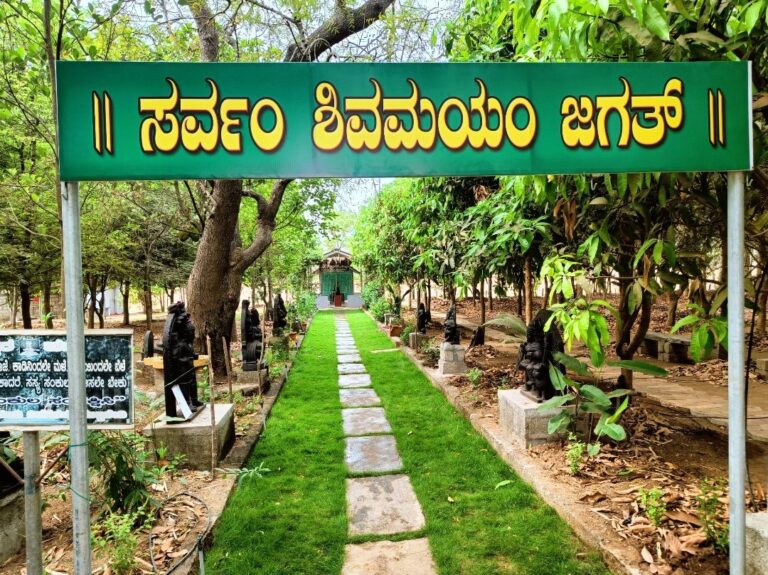
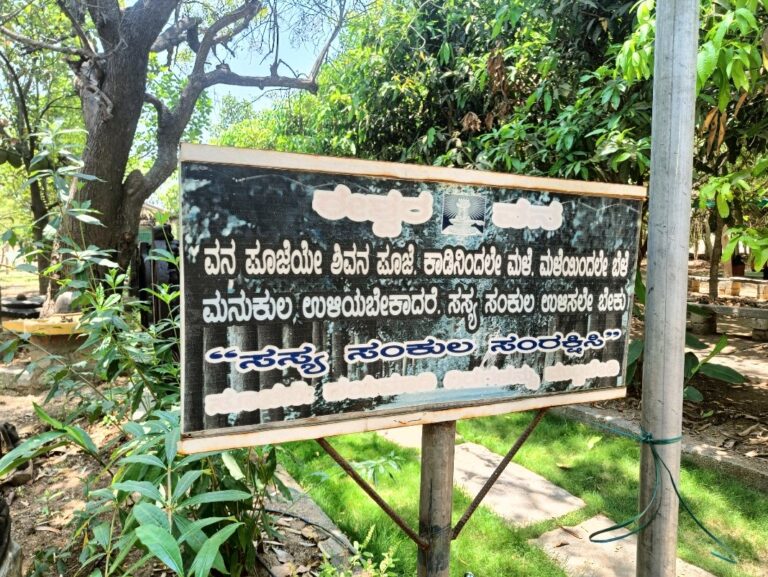


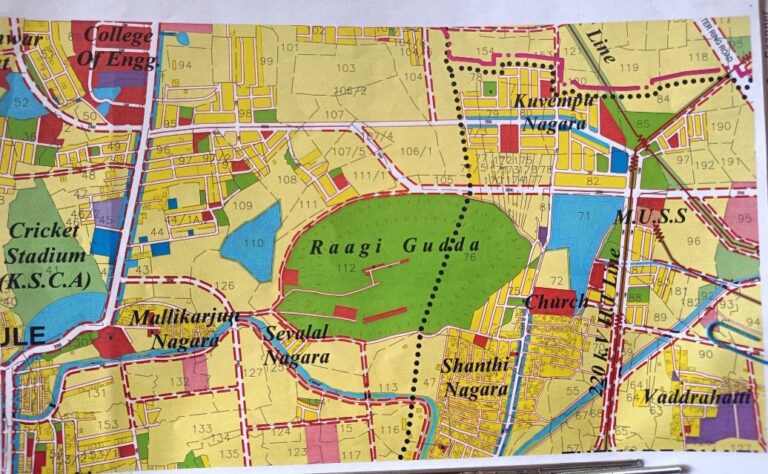
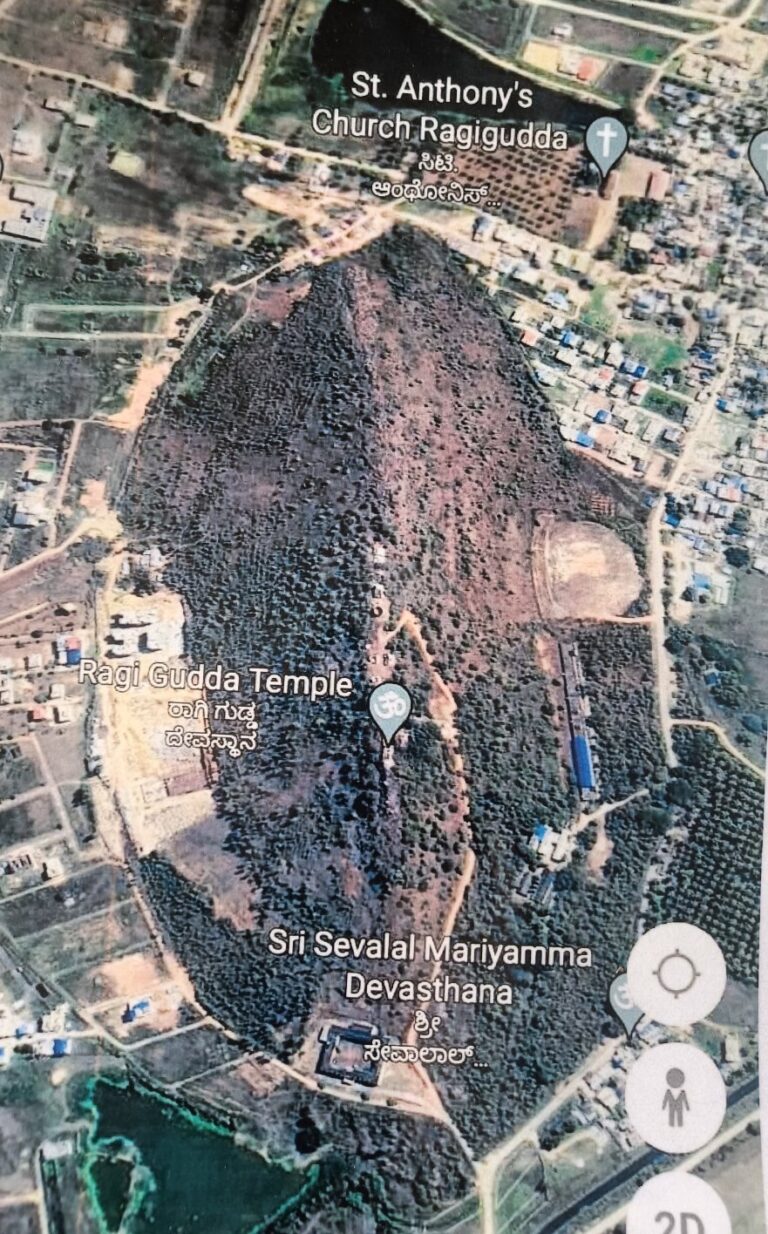

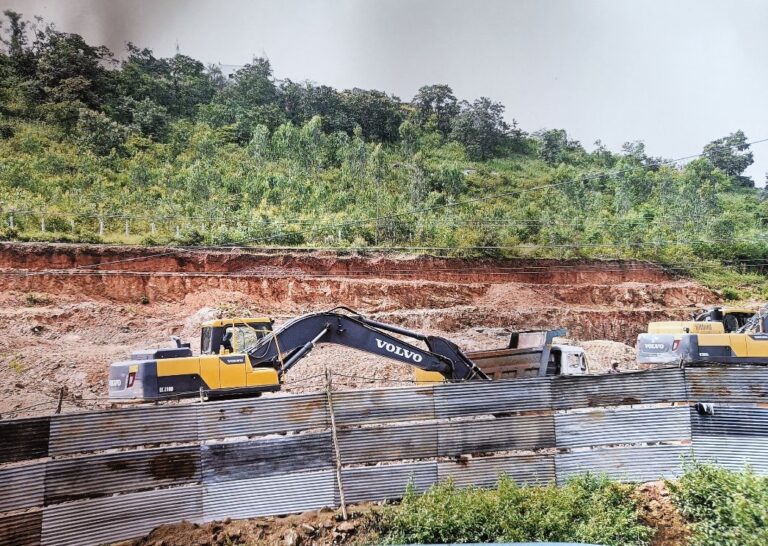


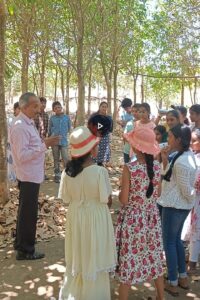



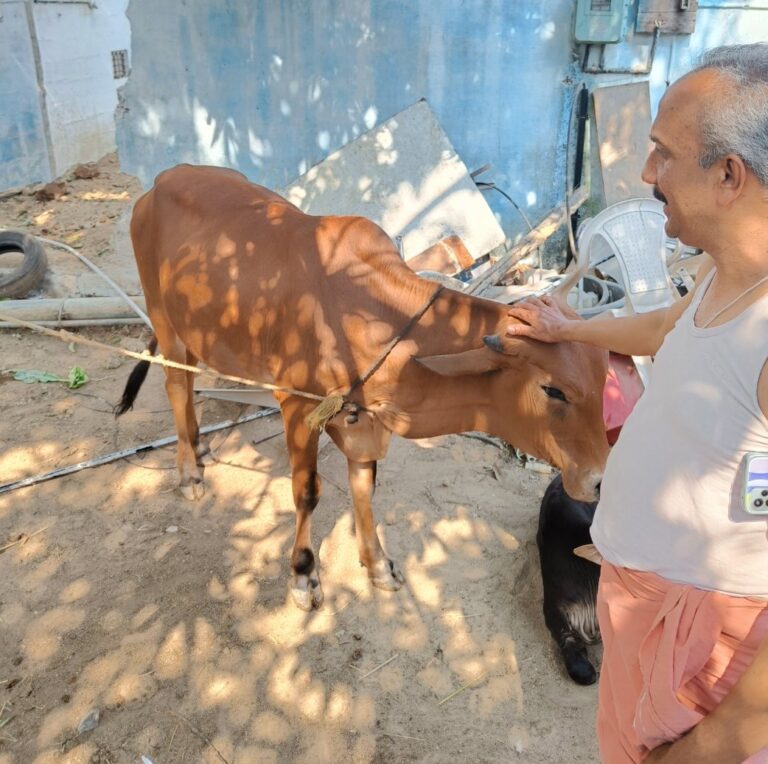
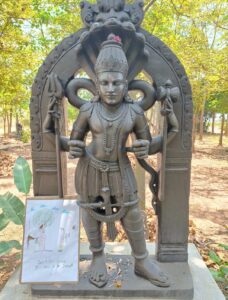

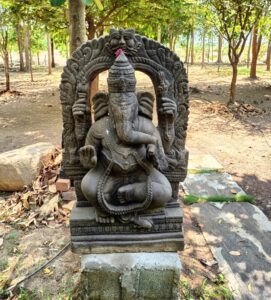
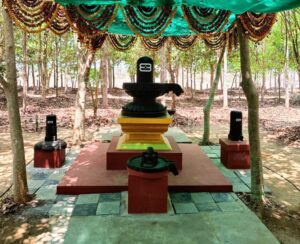
An inspiring person and story indeed. I loved the 10% contribution out of earning to social needs. That’s a wonderful thing to do.